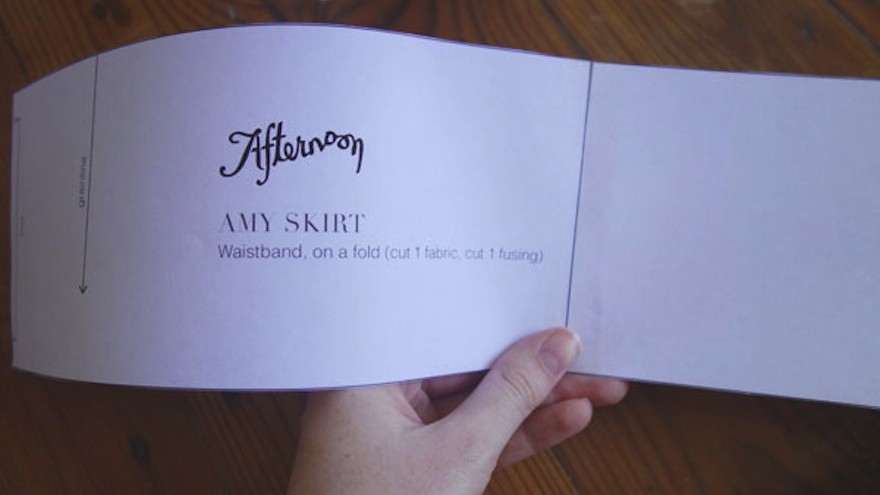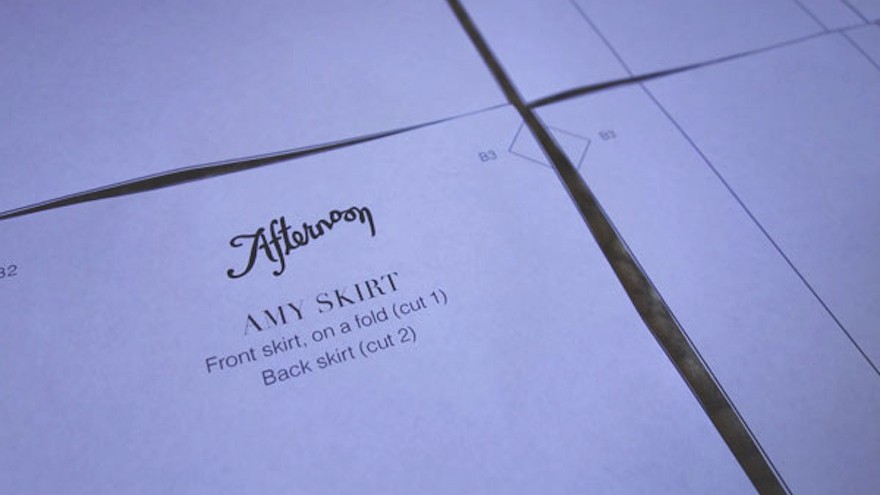From the Series
Emerging Creative Jennifer Jacobs designs modern sewing patterns with the goal of empowering and inspiring others to create something they can wear and be proud of. After completing a Bachelor of Journalism in Communication Design at Rhodes University, she moved to Cape Town where her love of sewing was reignited.
Jacobs hopes one day to establish an independent sewing label that revives the beautiful craft of pattern making while simultaneously making it something “cool”.
We caught up with Jacobs to find out what it’s like being a designer in South Africa and what it takes to design clothing patterns:
When did you discover that you wanted a career in design?
I’ve wanted a career in all sorts of things through the years, including but not limited to design.
I started pursuing sewing pattern design most recently out of a growing frustration with the lack of dressmaking resources in South Africa. I figured there must be others out there like me, looking for a community of like-minded sewing enthusiasts to turn to for inspiration and advice.
We still tend to think of sewing as something a little outdated, and I wanted to make it more modern and accessible.
You originally studied communication design. What made you want a career in design?
I suppose what I do now does appear to be at odds with my academic background in journalism and English literature! But sewing and pattern design really resonates with me as a way to revive a beautiful and forgotten craft, as well as an opportunity to re-evaluate where we sit as consumers in the cycle of fast fashion.
Why fashion design?
I consider sewing pattern design to sit at an interesting intersection of fashion, craft and education. On a meta level, it involves fashion design, but it also teaches a skill and nurtures a different relationship with clothing to the one we have with bought items.
When we make our own clothes, it puts us closer to the seat of production and prompts us to think about how our clothing is made and where it comes from.
I think that’s important in this age of fast fashion – buy, wear, chuck, repeat – as we are increasingly out of touch with the true cost of our clothing. That is, the human cost, the environmental cost.
In short, while I love fashion for its aesthetic value, the possibilities for education and systemic change that come from designing sewing patterns is what really drives me.
Tell us a bit about making sewing patterns – what does it involve?
Once I have my idea, I draft the pattern pieces and make a prototype in a standard size. From there, I make all my tweaks and adjustments, take it all apart and draft again from the fabric pieces. This becomes an iterative process until I am happy with the design and fit. At that point, I digitise the pattern and grade it for different sizes.
What is your main inspiration as a designer?
I love the fact that you can give three different people the same sewing pattern, but they will all make three totally different garments. I can turn whatever design I want into a sewing pattern, but style always ultimately comes from the maker.
Are there recurring themes in your design work?
Personally, I love working with texture and print when I sew. I have dabbled a bit in textile design in the past, and it’s something I would love to pick up again. As for my sewing patterns, I try to design tailored garments, which are often a take on vintage silhouettes that others can put their unique stamp on.
What do you hope the outcome of your design work is?
More people learning to sew! Feeling empowered and proud of something beautiful and useful that they have created.
What has been the best memory of your design career thus far?
The complete exhilaration of being accepted to show at Design Indaba is pretty high up there!
What do you believe the biggest benefit of design is?
Almost everything we see and use is touched by design and as such its benefits are equally varied – it would be impossible to pinpoint just one. For me, sewing pattern design is wonderful because it encourages creative participation. The product has to be engaged with; it is not just a passive design.
What are you currently working on?
I have a full-time job as a graphic designer in the digital marketing industry, so that keeps my days full! Otherwise, I’m pretty focused on Design Indaba right now but I have plans to work on a new pattern for winter.
What is it like being a designer in South Africa? What are the pros, cons and possibilities?
I can’t speak for other aspects of design, but in my experience the home sewing community in South Africa is rather quiet and insular. There is a lot of room for growth, and I can’t wait to be a part of that.
Why did you enter the Emerging Creatives programme?
I first went to Design Indaba when I was at university and I’ve always held the Conference in high regard. Emerging Creatives seemed like a great opportunity to find out if others felt the same way about clothing as I did, and whether my project could become a reality.
What do you hope to gain from the programme?
I’m really looking forward to meeting with other exhibitors across all kinds of amazing disciplines. And I’m hopeful that I will be able to connect with other stitchers that are interested in expanding the conversation about sewing to make it more visible and accessible and, heck, maybe just a little bit more cool.
Do you sell your designs? If so, where?
Yes! You can buy patterns as a digital download at shop.afternoon.co.za











